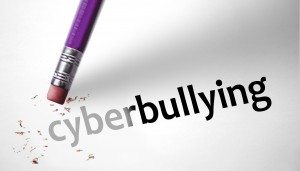 Social media can be a wonderful tool for building community, establishing brand identity and of course, connecting with friends. It can also be, as rapper Iggy Azalea recently realized, “the ugliest reflection of mankind there is.”
Social media can be a wonderful tool for building community, establishing brand identity and of course, connecting with friends. It can also be, as rapper Iggy Azalea recently realized, “the ugliest reflection of mankind there is.”
Upon returning from vacation, she logged into Twitter to discover that pictures of her in a bikini had surfaced online.
Her mentions on Twitter were filled with relentless harassment about her body. She announced that this type of constant social media bullying was causing her to “become an angry person” and that her management team would be handling her accounts from now on.
Iggy isn’t the only victim of cyberbullying through social media. Actor Robin Williams’ daughter quit social media when she received cruel messages on Twitter after her father’s death. Countless everyday people also fall victim to social media bullying and harassment on a regular basis, but what can be done about it?
This post serves as a reminder that you don’t have to tolerate social media bullying or harassment online. Social media platforms certainly don’t. They all have policies and recommended practices for how to handle bullies who prefer to type their attacks.
Hushing the Chatter on Twitter
Arguably the most-used weapon of choice for social media bullying, Twitter has been criticized for the way cases of bullying on their platform have been handled in the past. The social media site has made changes to their policies that help users get rid of the bullies harassing them in 140 characters or less.
You can end all communication with an online abuser by blocking them on Twitter. Even if your profile is public, blocking the user means that they can no longer see your tweets or mention you, and their messages to you will no longer show in your mentions.
There are sometimes those who aren’t wavered by silence and continue to find ways to send hateful messages. If you’re receiving relentless abuse and threatening behavior, Twitter also gives you the option to report the offender.
Blocking Faces on Facebook
Another wide open space for social media bullies to prowl is Facebook. Fortunately, unfriending a person on Facebook and changing your privacy settings to not receive messages is a lot more effective than unfollowing on Twitter. To go even further, Facebook also has an option to block people where they will no longer be able to send you private messages or chats, add you as a friend, or view anything you post.
Facebook’s guide on what to do if you’re being bullied online is also helpful.
Filtering Out Instagram Bullies
The photo-sharing platform has a policy against people who create accounts with “the intent of bullying or harassing another person.” There are strict community guidelines that users must follow or risk having their accounts deleted. Instagram users also have the option to block and report users or offensive photos.
Don’t Give Social Media Bullying a Platform
Regardless of the website, social media bullying is at an all-time high for every type of user. Businesses are often on the receiving end of online bullying. If you are a business owner, being able to recognize the difference between negative reviews and acts of defamation posted by cyber bullies is key. A good practice is to not respond to harassing comments on business pages. It is also advisable to take a screenshot of any threatening posts in case legal action ever needs to be taken.
If your personal profile or business page is ever attacked, exercise the right to put behind-the-screen bullies in their place: on your list of blocked users.
